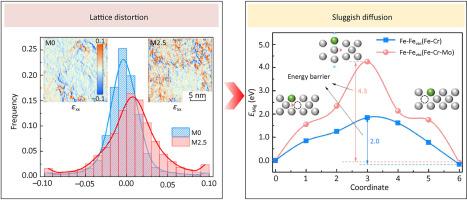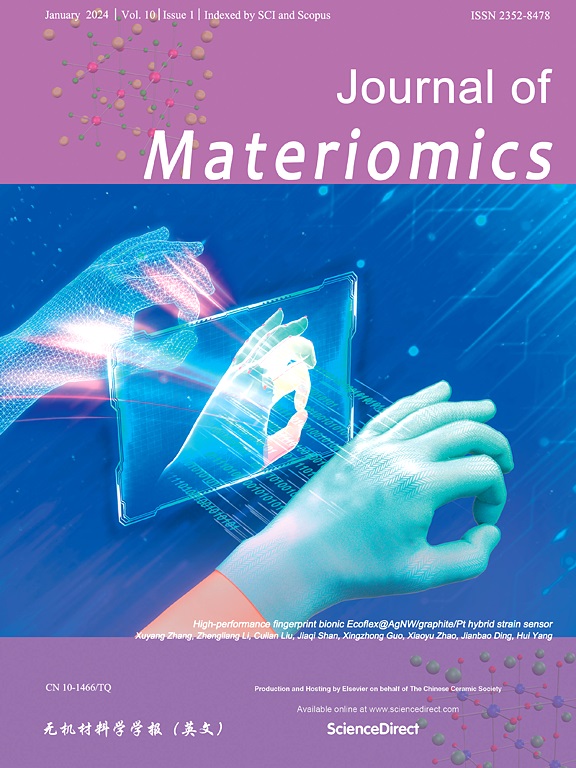基于晶格畸变效应的单腿沸石热电设备热稳定性优化
IF 8.4
1区 材料科学
Q1 CHEMISTRY, PHYSICAL
引用次数: 0
摘要
基于沸石(SKD)的热电材料因其在中温区的高功率(zT 值)而闻名。基于对长期高温服役的迫切需求,与铜电极连接时界面热稳定性差的问题极大地限制了其工业应用。在这项工作中,我们为 p 型 SKD 的阻挡层提出了一种新的合金化路线。我们获得了具有匹配热膨胀系数(CTE)、高机械可靠性和低接触电阻率的 Fe80Cr17.5Mo2.50/p-SKD 结。大规模钼的加入会导致阻挡合金的晶格发生严重畸变,从而导致元素扩散缓慢。因此,与不含 Mo 的(Fe80Cr20)阻挡层结相比,在 823 K 下老化 600 小时后,Fe80Cr17.5Mo2.5 结的反应层更薄(∼25 μm),接触电阻率更低(∼3.8 μΩ-cm2),剪切强度更高(∼14 MPa)。我们的发现为制造具有理想机械稳定性的基于 SKD 的长期高热稳定热电器件提供了新的视角。本文章由计算机程序翻译,如有差异,请以英文原文为准。

Thermal stability optimization of single-leg skutterudite-based thermoelectric devices based on lattice distortion effects
Skutterudite-based (SKD-based) thermoelectric materials are well-known for their high figure-of-merit (zT value) in the intermediate temperature region. Based on the urgent need for long-term high-temperature service, the poor interfacial thermal stability when connected with the Cu electrodes has greatly limited its industrial application. In this work, we propose a novel alloying route for the barrier layers for p-type SKDs. A Fe80Cr17.5Mo2.50/p-SKD junction with matched coefficients of thermal expansion (CTE), high mechanical reliability, and low contact resistivity is obtained. The addition of large-scale Mo causes severe lattice distortion in the barrier alloy, which contributes to the sluggish elemental diffusion. Thus, after aging at 823 K for 600 h, the Fe80Cr17.5Mo2.5 junction has a thinner reaction layer (∼25 μm), lower contact resistivity (∼3.8 μΩ·cm2), and higher shear strength (∼14 MPa), compared with the Mo-free (Fe80Cr20) barrier junction. Our finding opens a new insight for fabricating long-term high thermally stable SKD-based thermoelectric devices with desirable mechanical stability.
求助全文
通过发布文献求助,成功后即可免费获取论文全文。
去求助
来源期刊

Journal of Materiomics
Materials Science-Metals and Alloys
CiteScore
14.30
自引率
6.40%
发文量
331
审稿时长
37 days
期刊介绍:
The Journal of Materiomics is a peer-reviewed open-access journal that aims to serve as a forum for the continuous dissemination of research within the field of materials science. It particularly emphasizes systematic studies on the relationships between composition, processing, structure, property, and performance of advanced materials. The journal is supported by the Chinese Ceramic Society and is indexed in SCIE and Scopus. It is commonly referred to as J Materiomics.
 求助内容:
求助内容: 应助结果提醒方式:
应助结果提醒方式:


